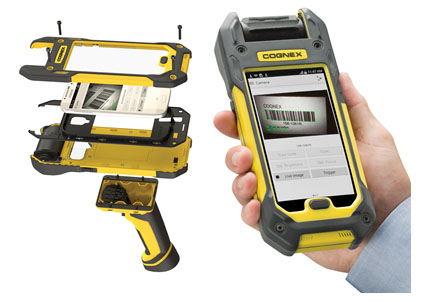When attending MODEX 2016, or for that matter any logistics trade show, it’s impossible not to notice the amount of Automatic Identification & Data Capture (AIDC) technologies that are available. This is a mature technology that continually offers shippers improved and expanded capabilities. AIDC not only speeds up the receiving process it is the key to improving inventory and order fulfillment accuracy.
Receiving and putaway operations are where the flow of materials and information join and must be swiftly and accurately routed downstream in synchronization with one another. It has been a long-standing practice for product vendors to apply a UCC14 bar code to the outside of each carton. This is a 14 digit identifier (that includes the UPC) with which shippers can electronically identify in-bound products.
Holste Says... |
 |
| Receiving and putaway operations are where the flow of materials and information join and must be swiftly and accurately routed downstream in synchronization with one another. |
 |
What do you say? |
 |
| Click here to send us your comments |
|
|
|
For maximum efficiency, all the data collected electronically must be managed electronically. Even the most basic Warehouse Management System (WMS) can do so readily. The WMS records receipts, updates inventory, assigns storage and pick slot locations and updates host accounting and business management systems. Conveying and Automatic Guided Vehicle systems move pallet loads from receiving to storage locations, picking areas, and/or directly to shipping.
Even with WMS capability internally, shippers need to be linked to suppliers. With Electronic Data Interchange (EDI), carriers can send an ASN (Advanced Shipping Notice) so that receiving managers can preplan how inbound receipts will be processed. This capability can be expanded to allow real-time internet visibility to inventory and customer order fulfillment status.
Shippers receiving trailer loads of loose cases can deploy conveyor systems that can transport bar coded cases to an automated receiving/sorting system as follows:
- Receiving cartons are manually placed onto a powered conveyor (that extends into the receiving trailer) where they can be conveyed, automatically scanned and sorted to outbound orders or to palletizing for putaway.
- A customer specific SSCC/18 bar-coded shipping label is automatically printed and applied to each carton.
Note: The use of automatic printer/applicators expands on the benefits that material handling equipment provides. While automatic printer/ applicators are by no means a new technology, advances have been made that yield higher throughput rates over a wider range of package sizes.
- The material handling conveyor system routes the cartons to the shipping sortation system.
- The shipping label is scanned and the product is sorted by customer and/or shipment and routed directly to the shipping dock where it is taken from the conveyor and palletized or floor-loaded directly into the shipping trailer.
- Loose case product that is not needed immediately to fill orders is conveyed to the shipping sorter where the cases are scanned (UCC14 label) and automatically sorted by SKU to palletizing stations for staging or putaway into inventory. Here robots can automate the pallet building operation.
With the above level of automation, checking and inspection of case goods or full pallet loads can be limited to random audits.
AIDC technology appears to be moving from laser scanners to camera based vision systems. The stated advantages include greater accuracy with higher read rates at price points comparable to laser scanners. Also, camera vision systems are more likely to read damaged and/or poor quality barcodes.
 Last week we reported from Modex 2016 that Cognex Imaging Systems (www.cognex.com ), primarily a provider of vision systems for bar code scanning on high speed conveyor lines, has built a platform into which a smart phone - either selected/acquired by the vendor or the end user company itself - is embedded into a traditional handheld gun format but also access COGNEX's vision-based scanning module. This multi-modal device appears to be well-designed (see picture on the right). Beyond merely a hardened case for housing a smart phone, the phone can be easily replaced with a newer model over time. Last week we reported from Modex 2016 that Cognex Imaging Systems (www.cognex.com ), primarily a provider of vision systems for bar code scanning on high speed conveyor lines, has built a platform into which a smart phone - either selected/acquired by the vendor or the end user company itself - is embedded into a traditional handheld gun format but also access COGNEX's vision-based scanning module. This multi-modal device appears to be well-designed (see picture on the right). Beyond merely a hardened case for housing a smart phone, the phone can be easily replaced with a newer model over time.
Final Thoughts
One of the many benefits of automating receiving is that it forces planners and business managers to methodically think all the way through the receiving process step by step to figure out ways to minimize the time from the receiving dock to the customer.
Any reaction to this Expert Insight column? Send below.
Your Comments/Feedback
|